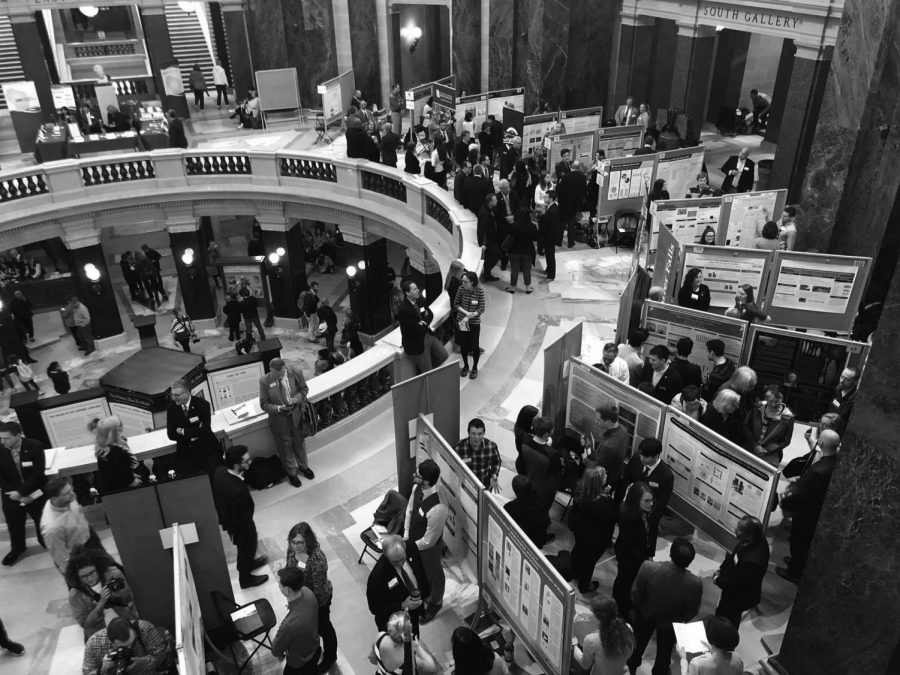Research in the Rotunda
The University of Wisconsin hosted its 16th annual Research in the Rotunda exhibit at the Capitol Rotunda in Madison, WI. The exhibit showcased research projects from various UW System schools, including University of Wisconsin-Platteville. The projects paired students with faculty members to investigate real-life issues affecting local and global communities with the goal of informing public policy, community involvement and the private sector. UW-Platteville showcased six different exhibits based in various fields.
Students teamed up with NASA to test the limitations of First Contact™ adhesive polymer, which is currently being used by NASA to clean astronomical equipment. The focus of the project was to determine how effectively First Contact™ could remove bacteria and DNA from various different surfaces. The project was carried out by Michael Schneider, a senior criminalistics major with a DNA emphasis from Stratford, Wisconsin, and Caitlyn Guldenpfenning, a senior biology major with an emphasis in molecular genetics from Letts, Iowa, with faculty oversight from Assistant Professor of biology Dr. Mark Levenstein.
A second UW-Platteville project highlighted in the exhibit investigated the effects that honeybees have on the habitat surrounding the UW-Platteville campus, as well as the effects of their activity on other native pollinators. The project began when Alex Harman, a senior biology major with an ecology emphasis, discovered the endangered rusty-patched bumblebee on campus. The study investigated how invasive species of honeybee, brought to North America by colonial settlers, may have affected the population and effectiveness of the rusty-patched bumblebee, which once could be found throughout the eastern United States. The research project found that the native bumblebee populations were highest in locations near where pesticides were not being sprayed. The research was carried out by Harman, along with Bailey Graf, Cassandra Wolf, Kelsey Gille and faculty mentor Dr. Becky Doyle-Morin.
Another project on exhibit had student researchers working on the creation of a nano-porous material called the Metal-Organic Framework, a framework made of a metal ion and an organic molecule. In their reaction, a frame small enough to separate small molecules or ions was formed. The main focus of their research was to use this porous MOF to remove toxins from water in the processes of wastewater or drinking water treatment. The small pores would allow the MOF to capture certain materials and allow others to pass through. The research is still in its middle stages, but the researchers showed their progress at the exhibit. The students participating in this project were JaLynn Schuh, a senior from Plymouth, Wisconsin, and Hyeong Cheol Yoo, a junior from Seoul, South Korea, who are collaborating with Dr. Mohammad Rabbani, assistant professor of chemistry.
Other projects featured at Research in the Rotunda included: Closing the Gap Between Theory and Evidence – Coupled Phenomena in Unsaturated Bentonite Barriers Under Variable Temperature and Chemical Conditions, by Ian Brietlow and Katie Wardisnki; Emotion Mining on Twitter, by Daniel Zellmer; and The Effect of Psychosocial Stress on Substance Use Behaviors, by Dominique Kornely.




